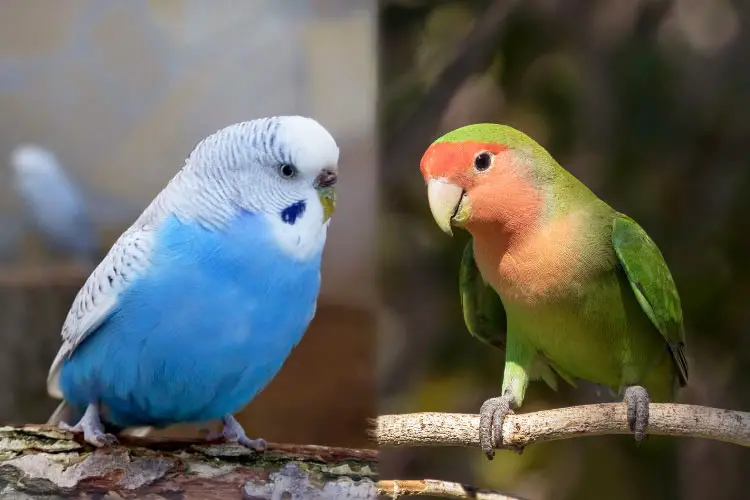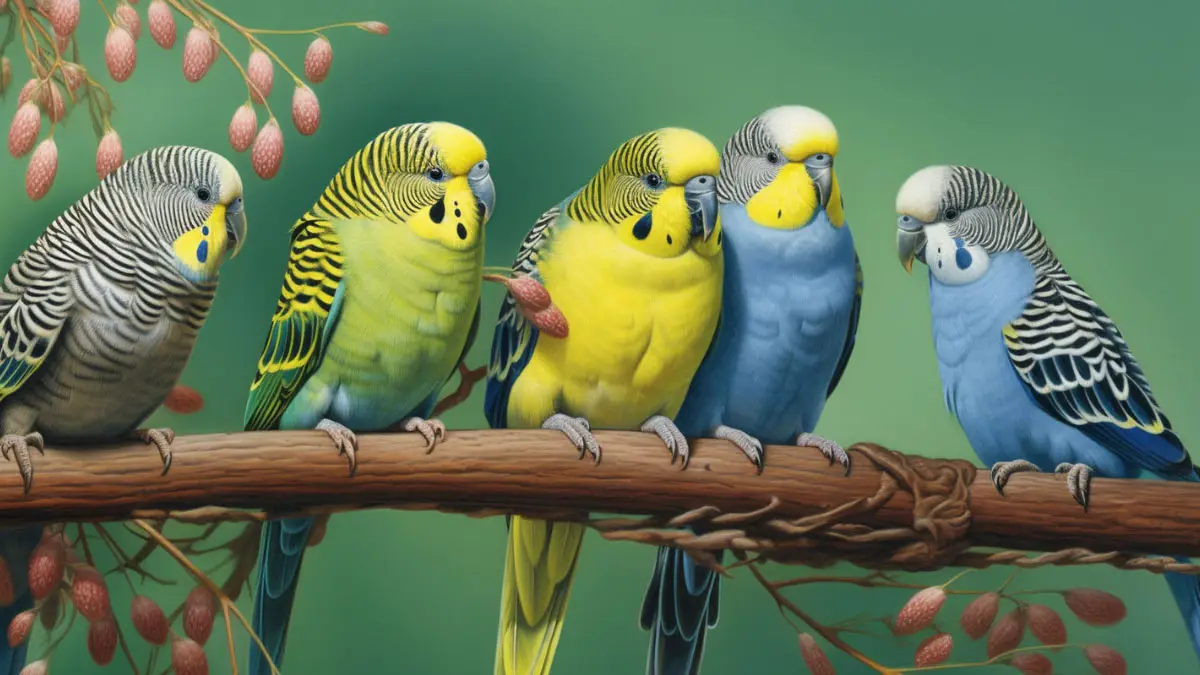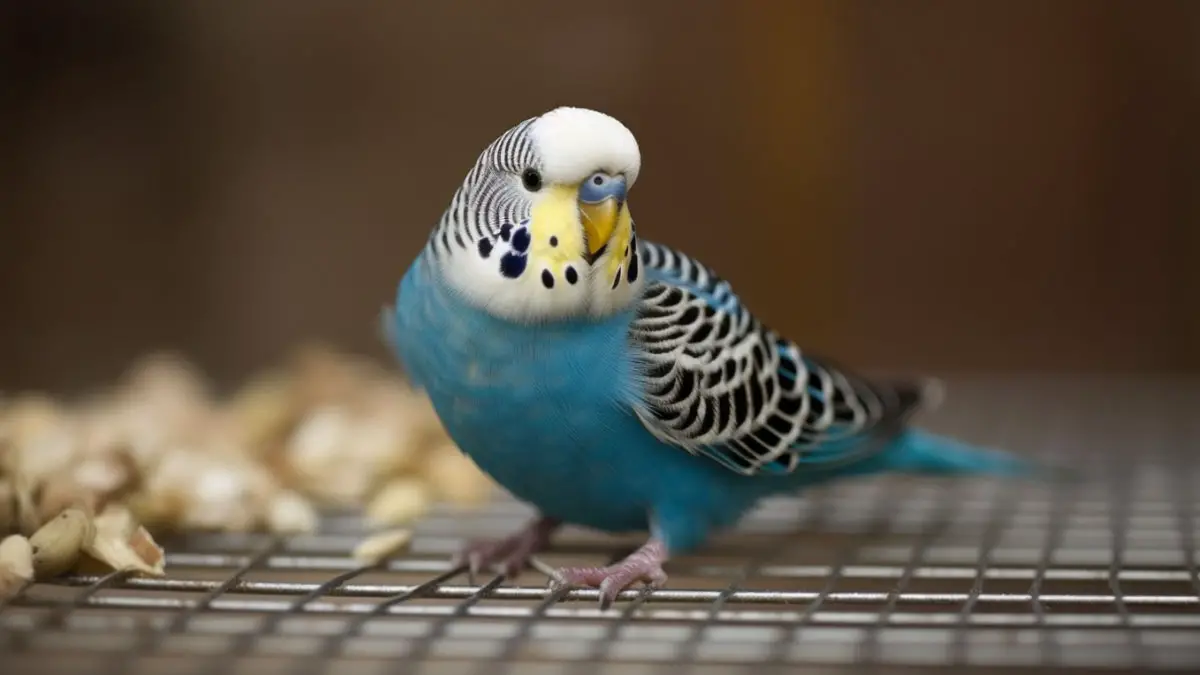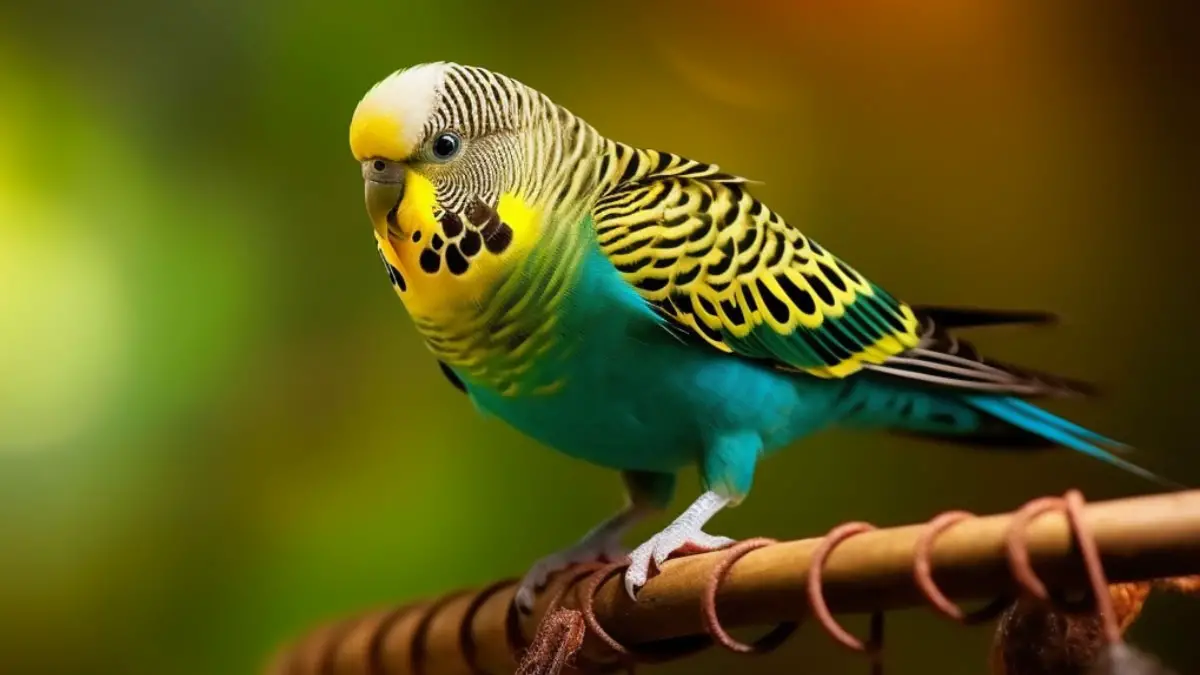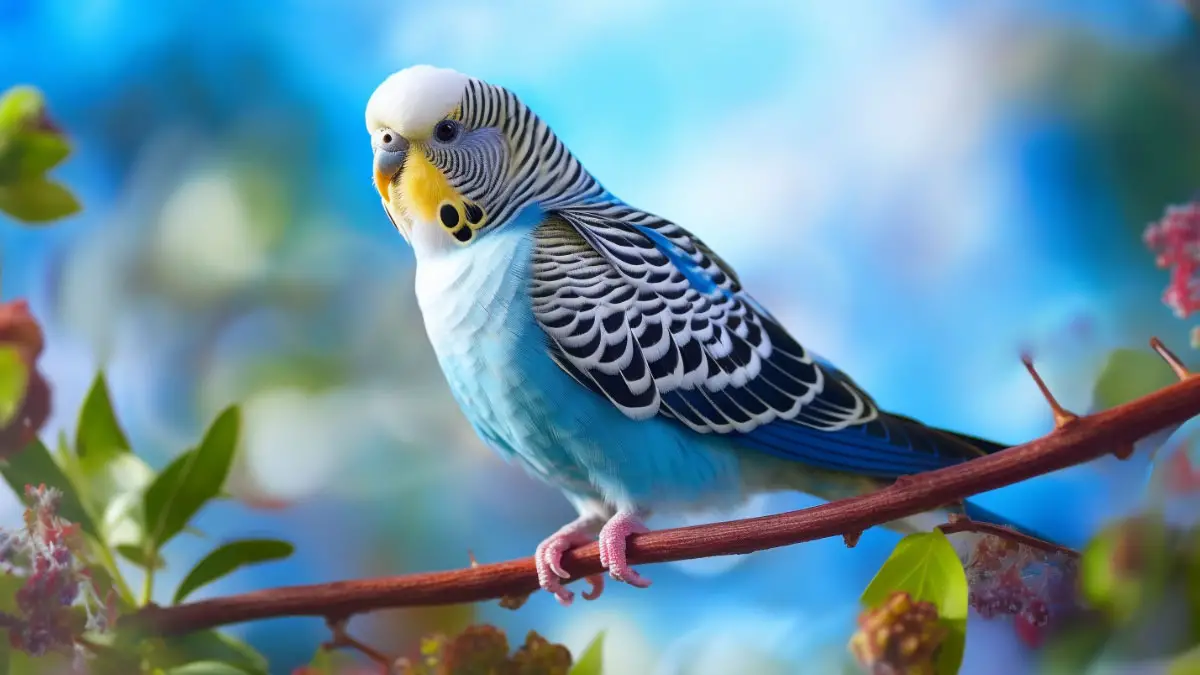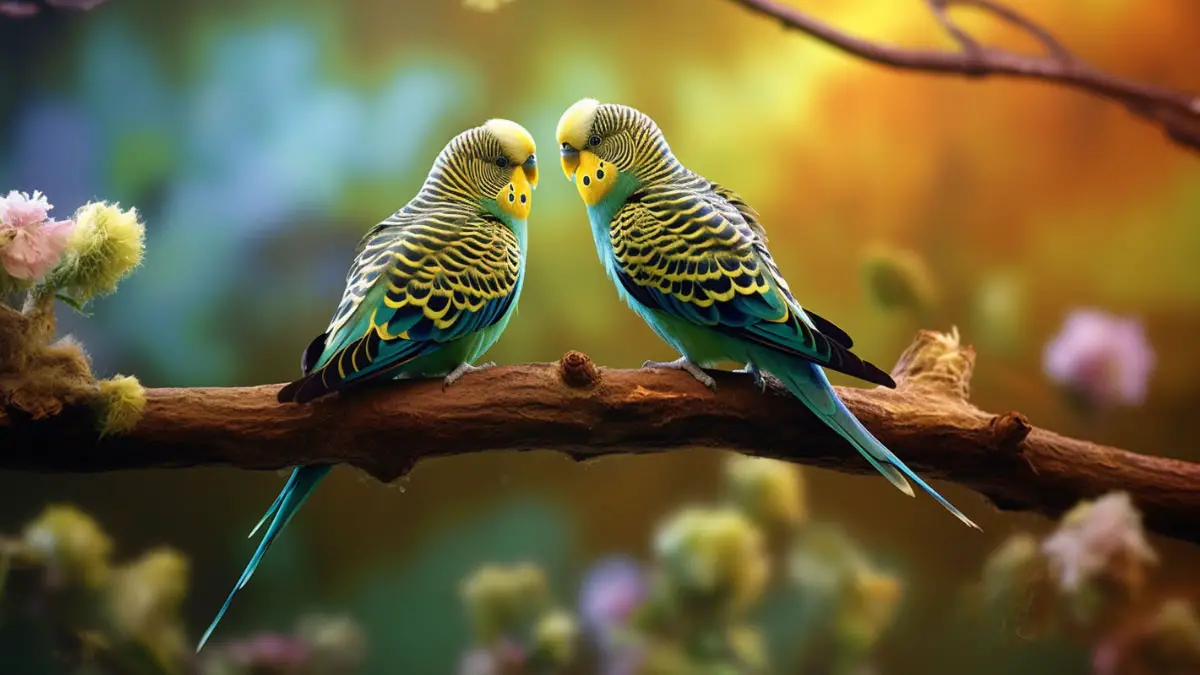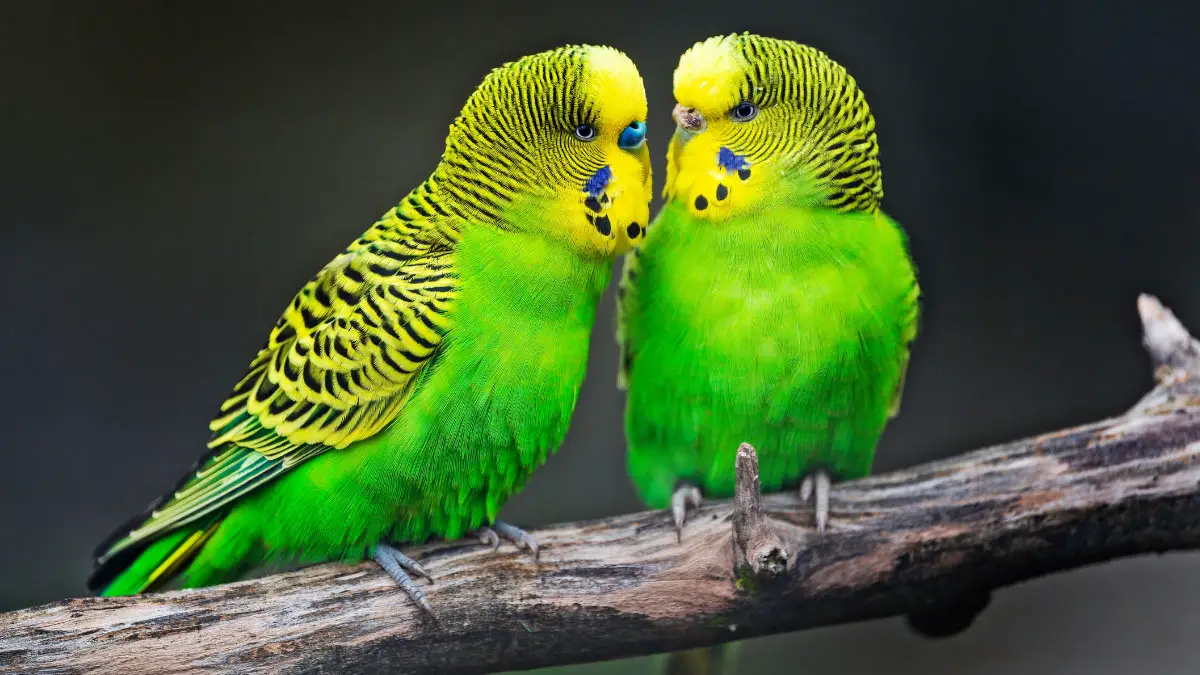If you’re unsure whether to choose a budgie or a lovebird for your starter pet birds, this guide is for you. Most people have a hard time choosing between the two birds as they have many similarities. However, understanding the unique traits that set these two birds apart will help you easily decide which one to go with.
Budgie vs lovebird pet birds are different in that budgies are less aggressive, less costly, and come in multiple color options. However, both birds have a handful of similarities including similar housing, diet, and the same level of intelligence.
Our guide below will take you through a detailed guide of how the two birds compare in key aspects including size, physical attributes, temperament, cost, life expectancy, trainability, and more.
Budgie Vs Lovebird Comparison Table:
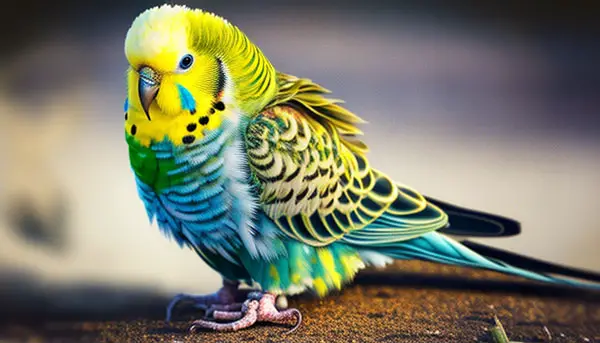
| Budgie | Lovebird | |
| Size | Around 7 inches | 5 to 6 inches |
| Weight | 1 ounce | 1½ to 2 ounce |
| Temperament | Friendly | Friendly |
| Vocalization & Noise | Vocalizes and chirps all day long | Vocalizes and chirps all day. A bit louder than a budgie |
| Cost | $10 to $35 | $45 to $200 |
| Lifespan | 5 to 10 years | 10 to 15 years |
Budgie Vs Lovebird comparison (side by side)
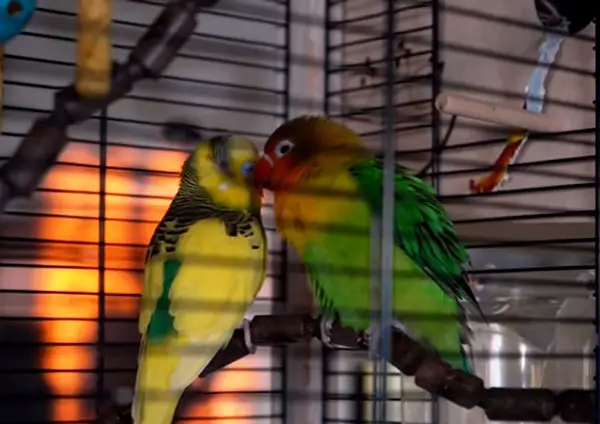
This is how budgies and lovebirds compare in various key aspects:
Physical attributes
Lovebirds come in a variety of colorations ranging from white to green to peach to teal. They have more vivid head and face colors which differ from the rest of the body colorations.
Most captive lovebirds have green plumage. Note that various color mutations exist among several species of lovebirds.
These birds also have short and blunt tail feathers. This is one of the key features that set them apart from budgies.
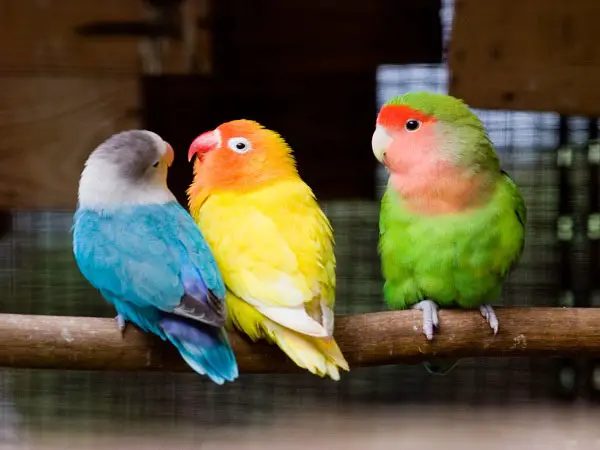
The lovebirds also have a stockier build. Their beaks are curved and their colorations vary from species to species; they range from, bold red-orange to pale beige.
Color mutations are also common in budgies. They come in a wide variety of colors ranging from blue to white to green to yellow.
Note that Budgies are slightly longer due to their long tails but they’re generally tinier than lovebirds. They have longer tails and appear slight.
Behavior and temperament
Lovebirds have many personality traits packed into their small body. They’re known to be active, playful, curious, and feisty. Like budgies, lovebirds are social birds and form deep bonds with their owners. They can also become quite cuddly due to this.
You should also keep in mind that lovebirds are quite aggressive, territorial, and jealous if you don’t properly tame and work with them from a young age. Females are believed to get even more jealous and territorial.
Budgies are not aggressive; they choose to be gentle and docile and are pretty easy to tame.
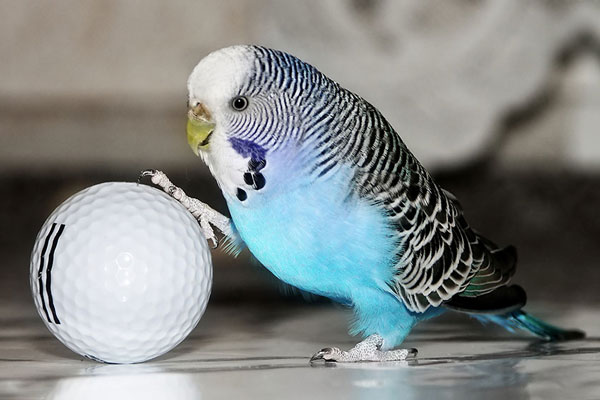
Due to their highly energetic and active nature, budgies will interact with you for hours. About 2 hours per day of interaction is recommended, though your budgie will like it if you spend even longer time with it.
Budgies can also be taught a variety of tricks over time, making them smart pet birds to have around.
Speech and vocalization
Lovebirds will produce loud and high-pitched chirps, especially when they want to seek your attention. They’re known to chirp throughout the day from the break to nightfall.
While they’re not as loud as the larger parrot species, lovebirds do like chattering and are slightly louder than budgies.
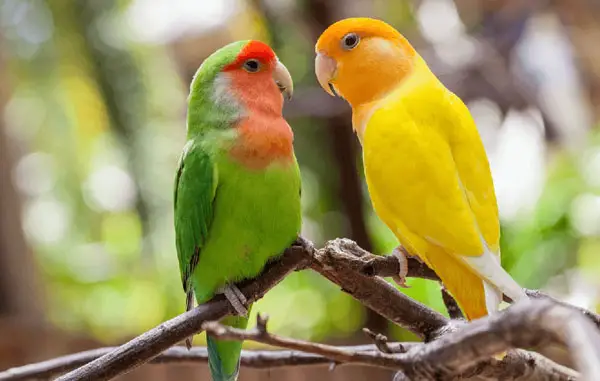
As for talkability, lovebirds aren’t the best when it comes to mimicking human speech or other sounds. Females tend to do better at mimicking speech and sound than males.
Budgies are good talkers and will also do it all day. Males tend to talk and whistle better than females. They’re also known to learn to mimic a variety of sounds in your house including message tones, alarm clocks, and so on.
Diet
Similar to other parrots, lovebirds and budgies require a variety of foods for a well-balanced diet. The basis of your pet bird’s diet should be pelleted bird food.
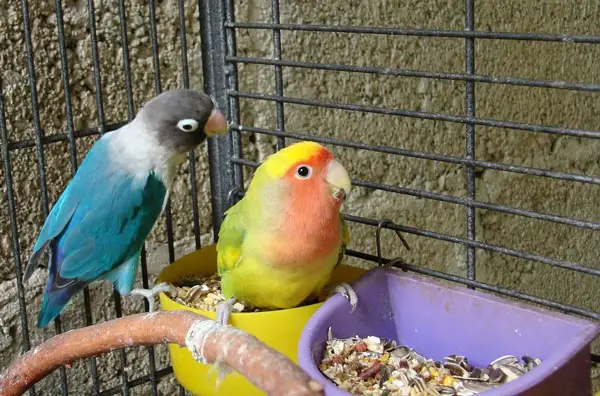
You can then supplement this with various fresh foods and seeds (seeds should be fed in moderation due to their high fat content).
Throwing a cuttlebone treat in your bird’s cage will also help boost your bird’s calcium levels.
Care requirements
Budgies and lovebirds require the same size of cage, perch sizes, toy sizes, and a variety of other accessories in their housing.
A lovebird requires a cage with ½ to 5/8 inches bar spacing. It should also be horizontal to allow your birds to easily climb to the sides.
Inside the cage, be sure to provide perches of varying sizes and materials to help keep your bird strong and healthy. Toys will also help keep your birds occupied.
Lovebirds and budgies require regular training and handling for you to tame them. Hand-raised lovebirds are much easier to tame, though you can still tame any other bird with patience and a little time.
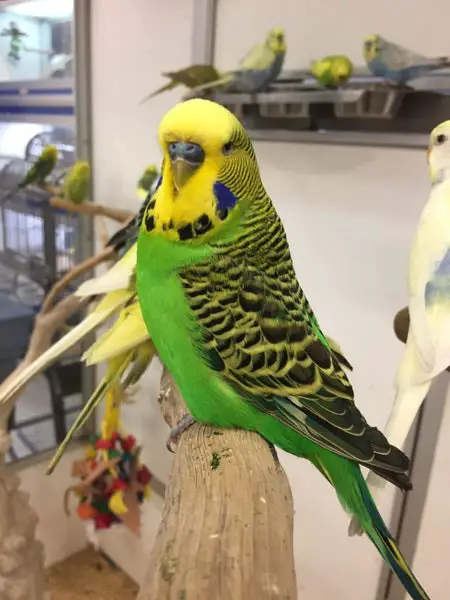
Note that you don’t necessarily have to keep your lovebird in pairs and it can do fine without a mate provided it gets adequate attention as well as social interaction from you.
However, if you don’t have enough time to interact with your lovebird or parakeet, then you should consider getting him/her a companion.
Since both birds are quite active (a common trait among parrots), they require a bit of regular exercise to help keep their bodies in top physical condition. It’s up to you to ensure they have a safe area for playing outside their cage for a few hours a day.
Life expectancy
Budgies cannot live for more than 5 to 10 years with proper care. Some budgie owners don’t give their pets quality time or take good care of them, significantly lowering their lifespan.
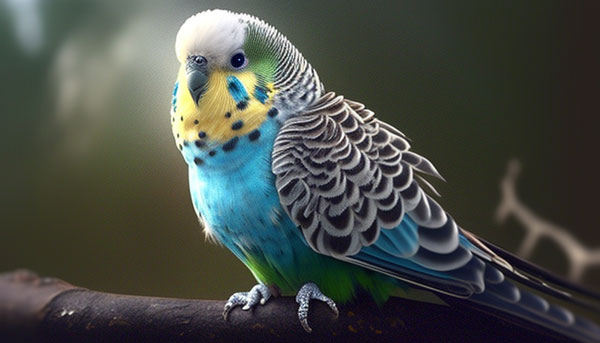
Lovebirds, on the other hand, have a longer lifespan of 10 to 15 years when taken good care o and fed with a proper diet that’s highly nutritious.
Which is smarter budgie or lovebird?
Budgies are smarter and have a better understanding than lovebirds. They can easily learn new tricks, play games, and even talk with humans.
Budgies also remember their names, which takes their intelligence to a whole new level. Also, budgies are known to form emotional bonds and their sharp brains can memorize the past.
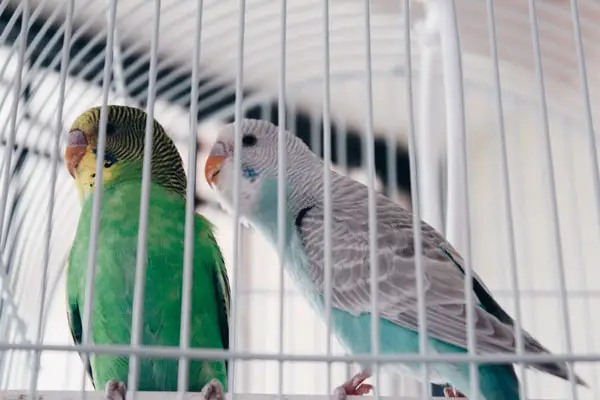
This particular study even showed the budgies’ ability to recognize a specific pattern of words without any meaning, demonstrating their ability to pick out abstract patterns. Before this, only humans, monkeys, and rats had shown this capability.
Can lovebirds and budgies live together?
Though budges and lovebirds have the same size, and dietary needs, and are members of the parrots’ family, we don’t recommend keeping them in the same cage.
This is because they have different personality traits and don’t speak the same language, which can cause problems.
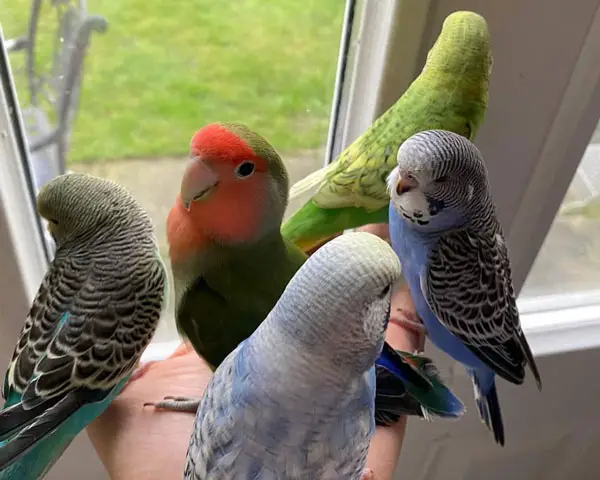
If lovebirds turn territorial, parakeets will have no means to protect themselves from the attacks as they have weaker and less sharp beaks, not forgetting they’re the tinier of the two.
Lovebirds have a reputation for being aggressive/territorial and biting other birds in their cages and budgies are no exception.
Which parrot is most affectionate: a budgie or a lovebird?
Both lovebirds and budgies are affectionate pet birds, so the level of affection the birds shows depends on your individual bird pet and the time and attention you usually give it.
Whether you get a budgie or a lovebird, it will be affectionate towards you if you spend enough time interacting with it. If you create a strong bond with your budgie, then it will become affectionate to you.
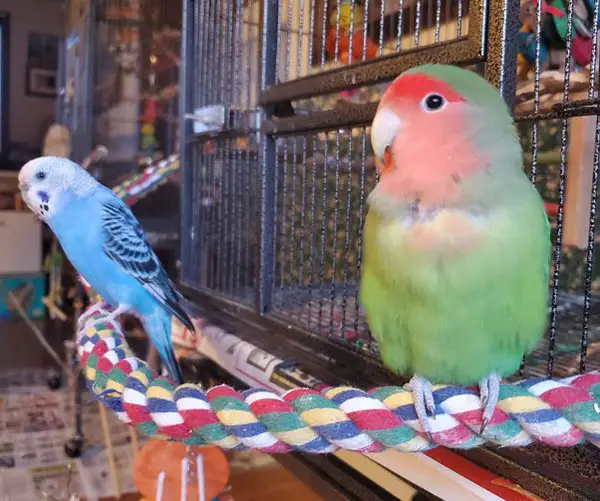
The history of your individual pet will also affect how affectionate it is. If it was kept with memory of a fellow bird, then it’s likely to get more affectionate to its cage mate (if any).
However, if it was hand-fed by its breeder, then it will be easier for it to develop a bond with you.
FAQs:
Definitely not. Despite the two birds being the smallest in the family of parrots, they belong to different species. They have different physical attributes; budgies are usually smaller and have longer tails compared to lovebirds. However, the two birds share some similarities such as diet, cage requirements, etc.
Budgies aren’t lovebirds, and calling them so is no doubt some form of confusion. The lovebirds are a type of small parrot family that get their name from their unique character where they tend to choose one partner to stay with for their entire life.
Lovebird and budgie hybrid is impossible since the two birds belong to different species of birds. This means the eggs a mating budgie and lovebird produce won’t survive since no fertilization will take place.
Final Verdict
Budgies and lovebirds come from the same family of parrots and make great pet birds for beginners. They’re small, come in a wide range of colors, and are friendly and affectionate toward their owners. They have the same dietary needs and cage requirements.
Budgies seem to gain an upper hand over the lovebirds. They’re more talkative than lovebirds. They’re smarter and less aggressive than lovebirds. Budgies will require your interaction while lovebirds can do well on their own, though they also need your attention.
